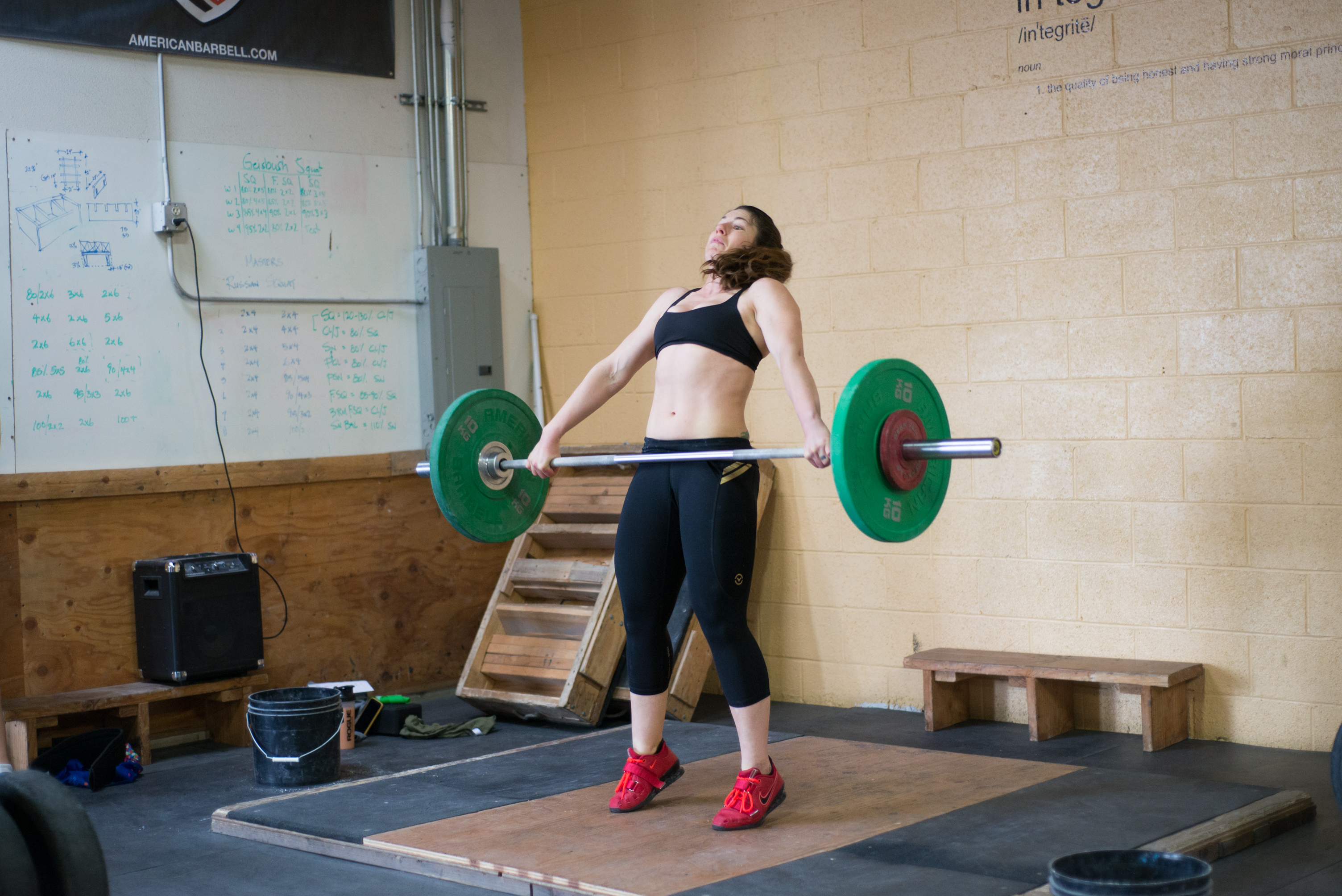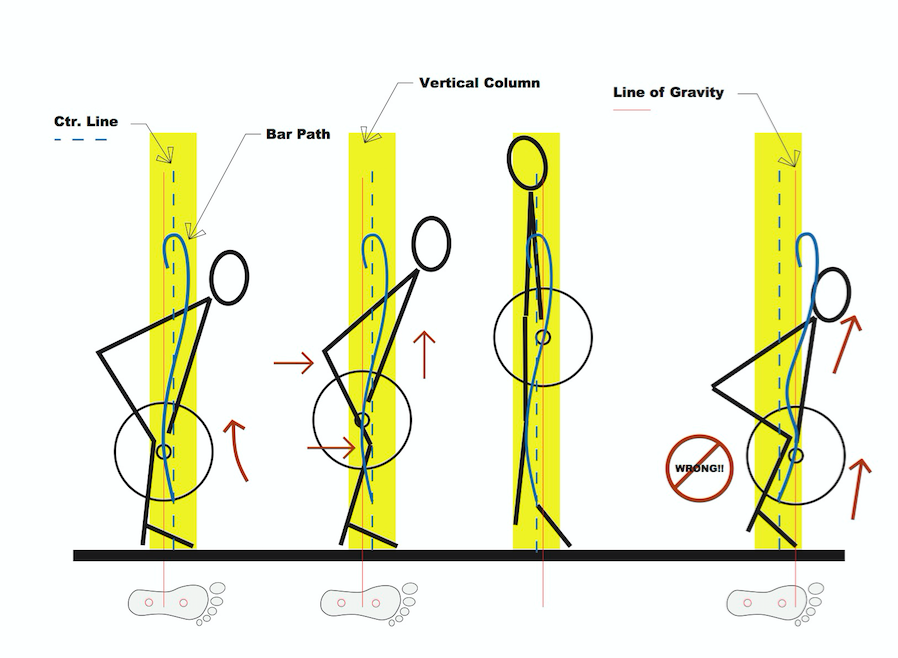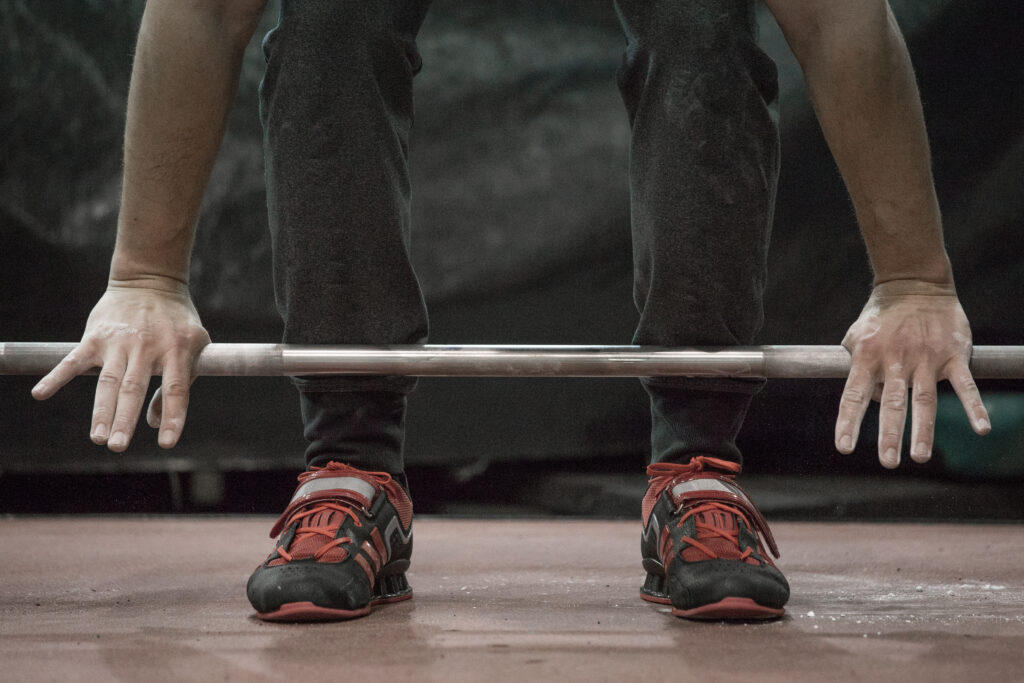Editors note: This article is an op-ed. The views expressed herein are the authors and don’t necessarily reflect the views of BarBend. Claims, assertions, opinions, and quotes have been sourced exclusively by the author.
I’ve been involved with USA Weightlifting for over 30 years, and I’ve been helping others learn to lift better the past 20. Whether you are a weightlifter, other sport athlete, or functional fitness athlete, learning to find the delicate balance on your feet throughout the entire lift is among the most critical of skills required for maximized movement performance in Olympic Weightlifting.
CrossFit first came to my attention in the beginning of 2006 while I was Head Coach of a Community Olympic Development Program for Weightlifting in Southern New Jersey. An interesting phenomenon about the CrossFit® community I noticed (at least in my personal observation): Once a coaching cue has been proven to work, it’s used for everything in life from brushing your teeth to interviewing your next boyfriend.
And the most over-used, misused, and completely misunderstood coaching cue I continue to hear among lifters of all backgrounds? “Stay on your heels!”
There is one (1), ONLY one possible situation in the Sport of Weightlifting when this coaching cue applies, and that’s during preparation for the JERK. No other time – period.
During the various phases of pulling the bar from the floor (clean or snatch) and into the receiving position (overhead squat for snatch and front squat for the clean), the better we maintain the bar path inside “a narrow vertical column” – over the middle of our feet — the more successful we can be with the lift. As seen from a side view, Fig#1 below shows this “Vertical Column” centered over the original Ctr. Line created between the barbell and gravity, when the barbell sat motionless on the platform.
In 1976, Dr. John Garhammer performed force plate studies* recording the point load on the feet of elite weightlifters. As I understand Dr. Garhammer’s tabulated results from 30 years of data, the load is closer to the ball of our feet as we break the bar from the floor. This point load moves slightly backward “toward” the heel and around the outside of the foot as the bar gets to knee height. The most complicated portion of the lift is in getting the knees to extend enough for the barbell to pass while continuing to applying vertical force on the barbell. This is the completion of the 1st Pull.
The barbell moves up and slightly backward before the shift of knees back under the barbell, while continuing the upward momentum. This shift causes the point load on the foot to move inside and forward until the thigh brush – violent hip/leg extension causing maximal force to be driven down into the platform, through the middle of our feet as we’re squeezing our buttocks in a jumping fashion and shrugging our shoulders (arms straight) pulling up on the barbell, resulting in a rise onto the balls of our feet as we fully extend vertically, pulling ourselves around and under the barbell.
If we can maintain this line of force and barbell trajectory inside this Vertical Column (see Fig#1), over our base of support — OUR FEET — the more stable we are and easier it is to exert maximal vertical force.*
It’s not the heels, nor toes, but somewhere right in the middle where the largest amount of force can be applied to elevating the barbell. There is a shift of the “point load” on our feet throughout the phases of the lifts. Provided that “point load” does not go beyond our area of base we maintain our balance.
Try standing perfectly straight, feet about hip width apart and your toes curled up hard into the top of your shoes. Now, without bending from ankle, knee, hip, or spine, and with your toes curled up, try and see how far you can lean backward before that delicate balance is lost? Try this same lean forward with your toes curled up. Pay close attention to the feeling in your feet. Like Goldilocks and the Three Bears, on the toes and the porridge is too HOT, back on the heals and the porridge is too COLD, somewhere right in the middle it’s just right! Find your feet!
* Garhammer, J. (1976). Force Plate Analysis of Snatch Lift. International Olympic Lifter, 3(4) 22-27.
Featured/first image: Fresh Burst Photography


